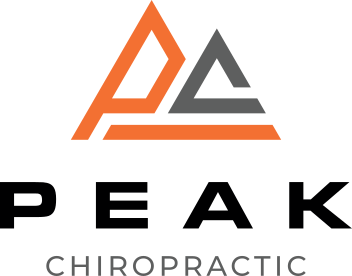If you're struggling with back pain, it's important to explore effective techniques that can provide relief and improve your quality of life. You might find that a mix of stretching exercises, strengthening workouts, and mindfulness practices can make a significant difference. Simple stretches like the Cat-Cow or Child's pose can enhance flexibility, while strengthening your core lays the groundwork for better posture. But there's more to it than just these basics; understanding the nuances of heat and cold therapy can further aid your recovery. Curious about how to integrate these techniques into your routine?
Stretching Exercises
Stretching exercises are essential for relieving back pain and improving flexibility. When you incorporate stretching into your daily routine, you'll notice a significant reduction in tension and discomfort. Simple stretches can help to elongate tight muscles and enhance blood flow, which is vital for recovery.
Begin with the cat-cow stretch. Get on your hands and knees, arch your back while inhaling (the cow), and then round it while exhaling (the cat). This movement warms up your spine and promotes mobility.
Next, try the seated forward bend. Sit with your legs extended and gently reach toward your toes. This stretch targets your lower back and hamstrings, helping to release tightness.
You shouldn't forget the child's pose. Kneel on the floor, sit back on your heels, and stretch your arms forward on the ground. This stretch not only relaxes your back but also calms your mind.
Another effective stretch is the knee-to-chest. Lying on your back, pull one knee at a time toward your chest, holding for several seconds. This helps to alleviate lower back tension.
Make sure you hold each stretch for at least 20-30 seconds, breathing deeply as you do so. Consistency is key; aim to stretch daily, especially if you sit for long periods.
With regular practice, you'll find your back pain diminishing and your overall flexibility improving, allowing you to move more freely throughout your day.
Strengthening Workouts
Incorporating strengthening workouts into your routine is essential for alleviating back pain and preventing future injuries. By focusing on specific muscle groups, you can create stability in your core and lower back, which plays a critical role in supporting your spine. Stronger muscles reduce the load on your back and help maintain proper alignment during daily activities.
Start with exercises targeting your core, such as planks and bridges. These movements engage multiple muscle groups and promote overall stability. Aim for three sets of 10-15 repetitions for each exercise, gradually increasing intensity as your strength improves.
Don't forget about your lower body. Lunges and squats are excellent for building strength in your glutes and legs, which also support your back. Incorporate these into your routine with the same rep range, focusing on form to avoid strain.
Resistance bands can be a valuable tool as well. They provide adjustable resistance, making it easier to modify exercises as you progress. Use them for rows and shoulder presses to strengthen your upper back and shoulders, which often contribute to back pain when weak.
Lastly, consider incorporating functional movements like deadlifts, which mimic daily tasks and strengthen the posterior chain.
Always listen to your body, and if you experience pain during any exercise, stop and consult a professional. Strengthening workouts, when done correctly, can dramatically improve your back health and overall physical performance.
Posture Improvement
Good posture is essential for preventing and alleviating back pain, as it directly influences the alignment of your spine. When you sit or stand with proper posture, you distribute your body weight evenly, reducing the strain on your back muscles and ligaments.
Start by being mindful of your posture throughout the day. Whether you're at your desk, walking, or lifting objects, paying attention to how you position your body can lead to significant improvements.
When sitting, keep your feet flat on the floor, your knees at a right angle, and your back straight against the chair. Your shoulders should be relaxed and your elbows close to your body. If you're working at a computer, verify the screen is at eye level to avoid straining your neck.
When standing, distribute your weight evenly on both feet, keep your shoulders back, and engage your core. This helps maintain a neutral spine position. If you find yourself slumping or leaning, gently remind yourself to correct your posture.
Incorporating posture checks into your daily routine can make a big difference. Consider using reminders or setting a timer to take breaks and assess your posture.
Additionally, practicing exercises like yoga or Pilates can strengthen the muscles that support good posture. By making posture improvement a priority, you can't only relieve back pain but also enhance your overall well-being.
Heat and Cold Therapy
After addressing posture improvement, it's important to explore additional methods for managing back pain, such as heat and cold therapy. These two techniques are simple yet effective in providing relief from discomfort.
Heat therapy works by increasing blood flow to the affected area, which helps relax tense muscles and soothe stiff joints. You can use a heating pad, hot water bottle, or even take a warm bath to apply heat. Just make sure you keep the heat source at a comfortable temperature to avoid burns.
Applying heat for about 15 to 20 minutes can often yield significant relief. This method is particularly beneficial for chronic pain or muscle tightness.
On the other hand, cold therapy is great for reducing inflammation and numbing sharp pain. Ice packs or cold compresses can be applied directly to the painful area for up to 20 minutes at a time. Cold therapy slows down blood flow, which can help alleviate swelling and inflammation, especially after an injury.
It's essential to wrap ice packs in a cloth to protect your skin.
You might also alternate between heat and cold therapy, depending on your specific pain situation. Start with cold therapy to reduce inflammation, then switch to heat to relax the muscles.
Both methods can be easily incorporated into your daily routine, providing you with the relief you need to stay active and engaged in your life.
Mindfulness and Relaxation Techniques
Your mental state plays an essential role in managing back pain, making mindfulness and relaxation techniques valuable tools for relief. When you practice mindfulness, you become more aware of your body and feelings, which can help you respond to pain more effectively.
Relaxation techniques can reduce tension, both mentally and physically, allowing your back to feel better.
Here are three techniques you can try:
- Deep Breathing: Find a comfortable position, close your eyes, and take slow, deep breaths. Inhale deeply through your nose, filling your lungs, then exhale through your mouth. Focus on the rhythm of your breath and let your mind clear. This simple practice can lower stress and promote relaxation.
- Progressive Muscle Relaxation: Start by tensing the muscles in your toes for a few seconds, then release. Gradually work your way up through your body—tensing and relaxing each muscle group. This helps relieve built-up tension that may be contributing to your back pain.
- Meditation: Set aside a few minutes each day to sit quietly and focus on a single thought, word, or mantra. If your mind wanders, gently bring it back to your focus. Regular meditation can increase your resilience to pain and improve your overall mental well-being.
Incorporating these mindfulness and relaxation techniques into your daily routine can help you manage back pain more effectively and enhance your quality of life.
Conclusion
Incorporating these techniques into your routine can make a significant difference in managing back pain. Regular stretching and strengthening exercises help build resilience, while good posture protects your spine. Don't underestimate the power of heat and cold therapy for immediate relief, and remember that mindfulness practices can enhance your overall well-being. By taking these steps, you can find effective ways to relieve discomfort and improve your quality of life. Start today and embrace a healthier, pain-free you!



